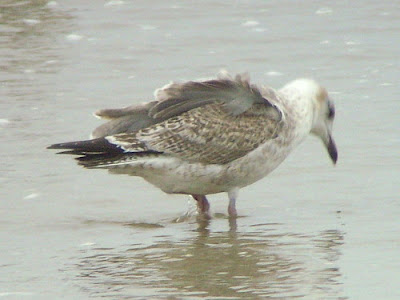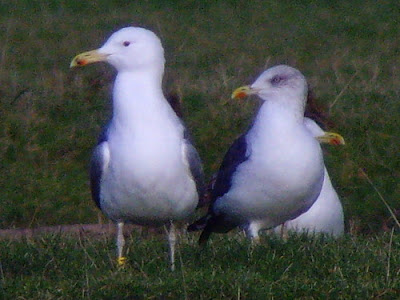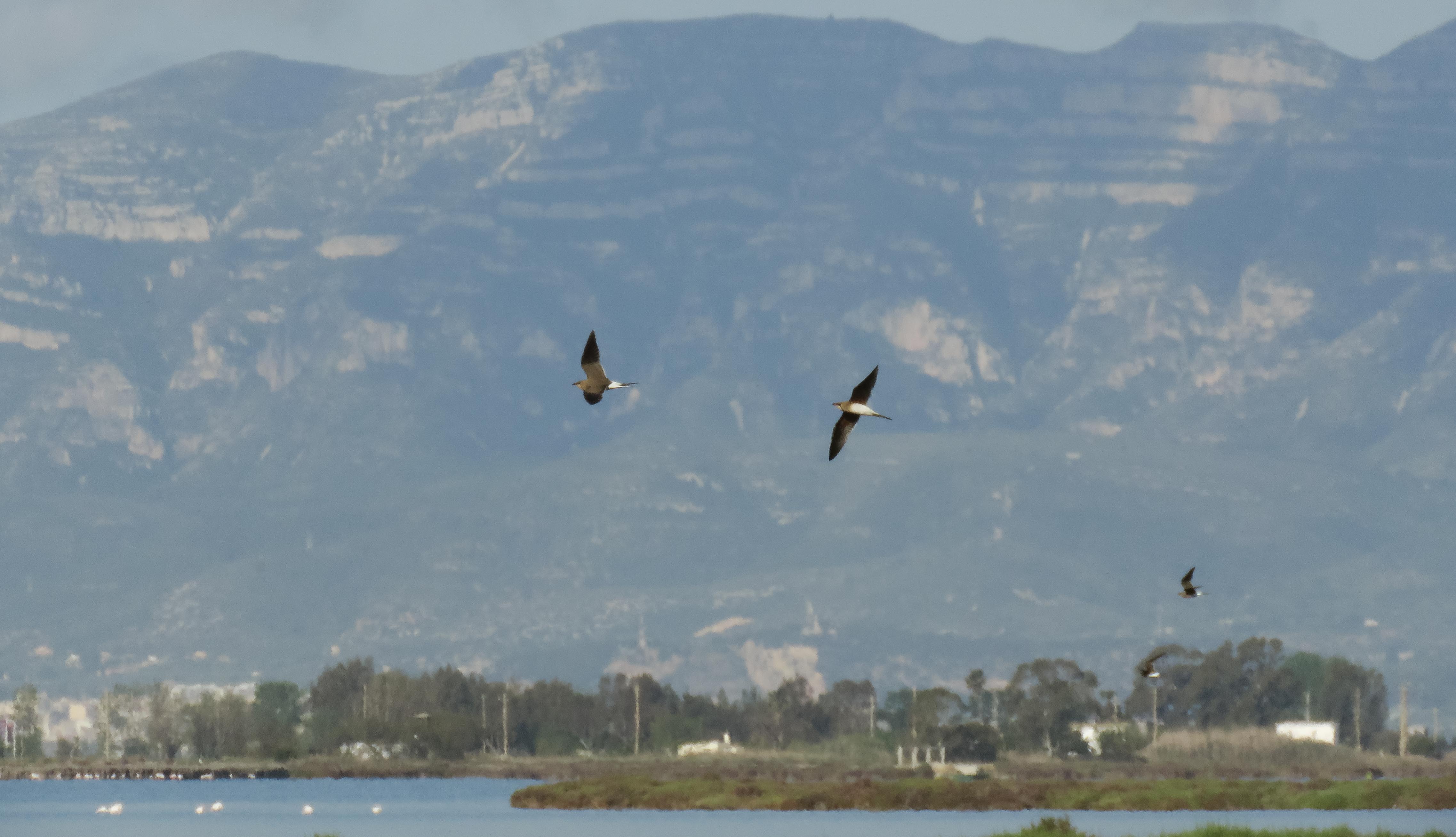Bewick's Swan 5 distant
Whooper Swan 1 presumed escape
Yellowhammer c.6
Wednesday, 26 December 2012
Monday, 24 December 2012
Sunday, 23 December 2012
23rd December 2012 Pett & Rye Harbour NR
Ditchling Common
Barn Owl 1
Buzzard 1
Pett
Red-throated Diver 2W
Great Crested Grebe 5
Brent Goose 1 on Levels, 2W
Scoter c.6
Merlin 1
Scandinavian Herring Gull 3 adults (east end)
Rye Harbour NR
Little Egret 5
Great White Egret 1 ex. flew from ditch north of Castle Water and landed in reedbed near Bittern Viewpoint
Marsh Harrier 1
Water Rail 1 in flight ex.
Sanderling 2
Yellow-legged Gull 4 (1w beach, 2w and 2 ad Castle Water)
Caspian Gull 4 1w (including polish-ringed individual on shingle ridge)
Scandinavian Herring Gull 3 adults
Barn Owl 1 ex. upper sides of flight feathers virtually wholly white
Stonechat 2
Fieldfare 10W
Cetti's Warbler c.8 heard singing
Barn Owl 1
Buzzard 1
Pett
Red-throated Diver 2W
Great Crested Grebe 5
Brent Goose 1 on Levels, 2W
Scoter c.6
Merlin 1
Scandinavian Herring Gull 3 adults (east end)
Adult Scandinavian Herring Gull at Pett
Rye Harbour NR
Little Egret 5
Great White Egret 1 ex. flew from ditch north of Castle Water and landed in reedbed near Bittern Viewpoint
Marsh Harrier 1
Water Rail 1 in flight ex.
Sanderling 2
Yellow-legged Gull 4 (1w beach, 2w and 2 ad Castle Water)
Caspian Gull 4 1w (including polish-ringed individual on shingle ridge)
Scandinavian Herring Gull 3 adults
Barn Owl 1 ex. upper sides of flight feathers virtually wholly white
Stonechat 2
Fieldfare 10W
Cetti's Warbler c.8 heard singing
First-winter Caspian Gull at Rye Harbour
A small and delicately built individual so presumably a female. A typical four-coloured individual courtesy of its white head and underparts, grey scapulars, brown coverts and black primaries. A superbly small and unmarked white-headed individual punctuated by its small dark eyes. It often adopted an upright stance being long-necked with its tell-tale protruding breast. Some dark grey nape streaking. Its slender tapering bill was two-toned being greyish basally and black-tipped. Its scapulars were virtually a plain pale grey. Its wing coverts had solid dark centres with pale fringes. Its dark greater coverts formed a dark bar across its closed wing. Primarily dark almost black tertials with narrow white thumbnail tips. Long pointed black primaries with length of tail tip to primary tip clearly longer than tertial tip to tail tip. Gleaming white neck and belly with some fine spotting to its breast sides and flanks. Gleaming white rump and upper tail contrasting with solid broad black tail band. Long pale flesh weak-looking legs with extensive tibia.
Same first-winter Caspian Gull as above and a more advanced first-winter (foreground) Caspian Gull at Rye Harbour NR
Advanced first-winter Caspian Gull at Rye Harbour NR
Another small and delicately built individual so presumably another female. Structurally appearing identical to the accompanying individual (see top image above). Its pale grey basal two-thirds to its bill, paler and greyer and predominantly plain mantle, scapulars and wing coverts and its worn vermiculated greater coverts caused me to consider it a second-winter but its dark-centred with narrow white thumbnailed tipped tertials strongly point to it being another first-winter individual albeit more advanced. It was a very active individual flying from place to place on the beach giving me repeated opportunity to capture its characteristic soft white axillaries and underwing coverts - superb. It would regularly appear aggresive to other Gulls in its vicinity raising its wings. Gleaming white rump and upper tail contrasting with solid broad black tail band. Long pale flesh weak-looking legs with extensive tibia.
First-winter Caspian Gull at Rye Harbour NR
In contrast to the two individuals above this was a large, hefty, bulky and large-billed individual so presumably a male. At times its large structure reminded me of a Yellow-legged Gull although it took on a different appearance on raising its long neck when its skeletal white head appeared peculiarly small and sleek, its back flat, and as whole, reassuringly attenuated. Again a typical four-coloured individual albeit more of its grey scapulars having dark internal markings. Its small white head (some brown staining was evident on its right side and some feather displacement on its left side) had a long sloping forehead and was very flat-crowned. Small black eyes complete with white eyelids. Its primarily black solid-looking bill had a pure white base to its lower mandible recalling a first-winter individual I have seen at Dungeness and an obvious gape line. Some restricted pale grey nape streaking and some blurred greyish blotching to its breast sides and flanks and across its belly so contrasting with its white head, neck and protruding breast. When facing away an obvious ventral bulge was apparent. White rump and uppertail contrasting with broad black tail band. On first reviewing my images I was somewhat perplexed by its dark-centred tertials having broad pale tips being slightly notched but have subsequently read that this is withing the variation shown by Caspian Gull (BB104:719). Long pointed black primaries with projection from tail tip virtually equal to tertial tip to tail tip. Long pale flesh weak-looking legs with extensive tibia.
Polish-ringed first-winter Caspian Gull PKPK at Rye Harbour NR
Hopefully the images speak for themselves as this beauty felt a textbook first-winter in every respect. It was ringed as a nestling in a pure Caspian Gull colony on an island in a reservoir at ZB. Kozielno, Paczkow just north of the southern border of Poland on 25/5/12 by Jacek Betleja and Jakub Szymczak. It is the first reported sighting (in fact, remarkably it is the same individual that was present at Newhaven Harbour on 3rd & 4th December) since being ringed in which time it has moved 1,139km west in 212 days. The ringing location falls to the south of the approximate hybrid zone mapped in BB104:705.
Map showing origin of colour-ringed Caspian Gull at Rye Harbour NR
Great White Egret over Castle Water, Rye Harbour NR
Whilst poles apart from MCC's regular images of this species from just over the County border they helpfully convey its large size, its long legs projecting far beyond its tail, large black feet and orange-yellow bill.
Saturday, 22 December 2012
22nd December 2012 Lewes & Exceat Bridge
Waxwing 7
Exceat Bridge
Yellow-legged Gull 1 adult
Caspian Gull 2 (advanced 2w & 3w)
Waxwings in the rain at Lewes
Third-winter and Second-winter Caspian Gulls at Exceat Bridge
Second-winter Caspian Gull at Exceat
Both birds showed smooth grey mantles and scapulars seemingly lacking any retained darker second generation feathers (but perhaps I missed some in the poor weather conditions and being too intent on trying to photograph it?) that I felt pointed to them both being 3w but these images would suggest this individual was in fact an advanced 2w. Its bill is clearly less mature, its tertials dark-centred, it long primaries lack white tips, there is more than a suggestion of a broad dark tail band!
Exceat Bridge
Yellow-legged Gull 1 adult
Caspian Gull 2 (advanced 2w & 3w)
Sunday, 16 December 2012
16th December 2012 West Rise Marsh & Exceat Bridge
Goldeneye 2
Yellow-legged Gull 1 adult
Exceat Bridge
Lesser Black-backed Gull c.350
Yellow-legged Gull 1 adult
Caspian Gull 3 (2 adults and a 3w) adult male polish-ringed PEAA
Yellow-legged Gull 1 adult
Exceat Bridge
Lesser Black-backed Gull c.350
Yellow-legged Gull 1 adult
Caspian Gull 3 (2 adults and a 3w) adult male polish-ringed PEAA
Typical Caspian Gulls are often described as small-headed, rather skeletal and generally looking pear-shaped.
Typical Caspian Gulls are often described as lanky or gangly. In this pose it displays the characteristic ventral bulge of the species.
Spot the giraffe! Aptly described as a large yet elegant Gull. Easy to see why Caspian Gull has the reputation of being long-necked.
Its bill all but lacks a gonydeal angle with virtually no bulge at the gonys so appears gently tapering.
Small-looking eyes contrast with the white head. Bulging neck reminiscent of an Anaconda swallowing a Capybyra!
The unmarked gleaming white head made it difficult to overlook amongst the surrounding Lesser Black-backed Gulls even when not appearing alert when it stood literally head and shoulders above them.
Its long, thin-looking legs were striking appearing particularly noticeable in the tibia.BB106:146 notes that presumably males, can look incredibly long-legged.
Whilst its small eyes make them dark looking its irises were amber and enlargement shows they were speckled. Its eyes were encapsulated by narrow red orbital rings.
For Caspian Gull the bill is most often more than twice as long as its maximum depth, while for Herring Gull it is most frequently a little less than twice its maximum depth.Some Caspian Gulls can be extremely long- and slim-billed, with ratios up to 3.25, compared with a maximum of 2.5 in Herring Gull. Try on the above...
Viewed head-on its pin-hole eyes were the order of the day.
The bill showed an isolated dark crescent and spot in the gonys with the small red spot restricted to the lower mandible.
Its hard to imagine a more snouty individual than this by virtue of its long sloping forehead and long, slim bill.
Whilst its upperpart colour was noticeably paler than the surrounding Lesser Black-backed Gulls it appeared darker than nearby argenteus Herring Gulls but paler and less blue compared to the adult Yellow-legged Gull in the same flock.
Its greyish-flesh coloured legs appeared typically pale.
BB104:712 detailed a trait-scoring system aiding identification of Caspian Gulls. Attempting to apply objective scores to this individual yields a result of 5 falling well below the hybrid threshold of 9.
Whilst not quite side-on it is just about possible to appreciate its attenuated rear-end by virtue of its flat back, limited tertial step and relatively long wings.
Wing stretching it reveals the white tip to p10, the mirror on p9 and even the unbroken narrow black subterminal band to p5 and the extensive pale grey tongues on the inner webs of the underside of the primaries.
Not quite the so-called Albatross-posture but nice to get the idea! It nicely reveals the long white tongue on the inner web of the underside of p10, the white tongue breaking through the black band separating the tongue from the tip (being a known occasional variation for pure Caspian rather than being indicative of intrgression with Herring Gull BB103:169) and the extensive white tip with just a shadow of an incomplete subterminal band.
Colour-rings might prove the best 'field character' for some Gulls but thankfully that doesn't apply to this individual!
Whilt my camera settings were all wrong and the bird distant this flight shot does reveal its long- and broad-winged appearance and in comparison with Herring Gull the greater length of the head, bill and neck extension in front of the wings also being apparent.
No hiding that long bill even in the poorest images!
With a bit of imagination just about possible to see the grey tongues eating into the black wing-tip on the upperside of the outer primaries that was readily seen in the field as it wing-stretched.
Polish-ringed adult male Caspian Gull at Exceat Bridge
Map showing original ringing location in Poland on 19/4/11, where the ring was read in the Netherlands on 1/8/11 and Exceat Bridge on 16/12/12. The Polish Caspian Gull breeding colony where it was ringed falls to the south of the approximate hybrid zone mapped in BB104:12:705.
We are very grateful to Grzegorz Neubauer (coincidentally one of the co-authors of Identification of Caspian Gull Part 2 BB104:12:702-742) and the Polish Bird Ringing Centre who replied by return 'nice Caspian Gull Larus cachinnans, ringed as a male at a Caspian Gull breeding colony at Żwirownia Zakole A, Jankowice, Babice, Malopolskie, Poland by Jacek Betlega on the 19/4/11 and subsequently seen at Wessem in the Netherlands on the 1/8/11 and at nearby Maasbracht, Bunkerhaven on 11/8/11 and 25/8/11 by Jeroen Nagtegaal.
Map showing original ringing location in Poland on 19/4/11, where the ring was read in the Netherlands on 1/8/11 and Exceat Bridge on 16/12/12. The Polish Caspian Gull breeding colony where it was ringed falls to the south of the approximate hybrid zone mapped in BB104:12:705.
Third-winter Caspian Gull at Exceat Bridge
Initially stood alongside the ringed adult its size and structure appeared identical so presumably another male sharing similar long- (especially in the tibia) and thin-legs being identically pale greyish-flesh coloured in appearance. Its long slim gently-tapering bill basally had an obvious cutting edge extending onto its face as an obvious gape-line and was noticeably duller than the adults being a limey greenish-yellow with a darker subterminal band at the gonys. It also shared its small clean white skeletal pear-shaped head with long 'never-ending' lores, pin-hole dark-looking small eyes complete with Albatross-like greyish furrowed-brows! Its lower rear nape was peppered by some dark spots. Its mantle was an unmarked grey appearing identical in hue to the accompanying adult. A few of its faded upperwing coverts retained their dark centres as did a tertial all of which were white-tipped forming an obvious tertial crescent. Its primaries were black and long. Prior to flying it adopted a long-necked giraffe-like posture.
Initially stood alongside the ringed adult its size and structure appeared identical so presumably another male sharing similar long- (especially in the tibia) and thin-legs being identically pale greyish-flesh coloured in appearance. Its long slim gently-tapering bill basally had an obvious cutting edge extending onto its face as an obvious gape-line and was noticeably duller than the adults being a limey greenish-yellow with a darker subterminal band at the gonys. It also shared its small clean white skeletal pear-shaped head with long 'never-ending' lores, pin-hole dark-looking small eyes complete with Albatross-like greyish furrowed-brows! Its lower rear nape was peppered by some dark spots. Its mantle was an unmarked grey appearing identical in hue to the accompanying adult. A few of its faded upperwing coverts retained their dark centres as did a tertial all of which were white-tipped forming an obvious tertial crescent. Its primaries were black and long. Prior to flying it adopted a long-necked giraffe-like posture.
Unringed adult Caspian Gull at Exceat Bridge
Another fine adult was present in the same flock, although in contrast to the ringed individual, this one seemed intent on sitting down and sleeping at every opportunity. Whilst flatter-crowned its overall size and structure appeared very similar to the ringed adult present so presumably another male. Note its pure white head with long sloping forehead, 'never-ending' lores, small dark-looking but actually amber-coloured eyes, grey brows, long slim bill complete with obvious cutting edge basally, restricted black spot and red restricted to its lower mandible. In the image of it walking, almost as if on tiptoes, the grey hue of its upperparts appears uniform and darker than argenteus, its flat back is striking, its ventral bulge is just visible as are its long pale greyish fleshy slightly ochre-tinted legs - long tibia again readily apparent. It appeared long-winged with obvious white tips to p10.
Another fine adult was present in the same flock, although in contrast to the ringed individual, this one seemed intent on sitting down and sleeping at every opportunity. Whilst flatter-crowned its overall size and structure appeared very similar to the ringed adult present so presumably another male. Note its pure white head with long sloping forehead, 'never-ending' lores, small dark-looking but actually amber-coloured eyes, grey brows, long slim bill complete with obvious cutting edge basally, restricted black spot and red restricted to its lower mandible. In the image of it walking, almost as if on tiptoes, the grey hue of its upperparts appears uniform and darker than argenteus, its flat back is striking, its ventral bulge is just visible as are its long pale greyish fleshy slightly ochre-tinted legs - long tibia again readily apparent. It appeared long-winged with obvious white tips to p10.
Subscribe to:
Comments (Atom)



















































































